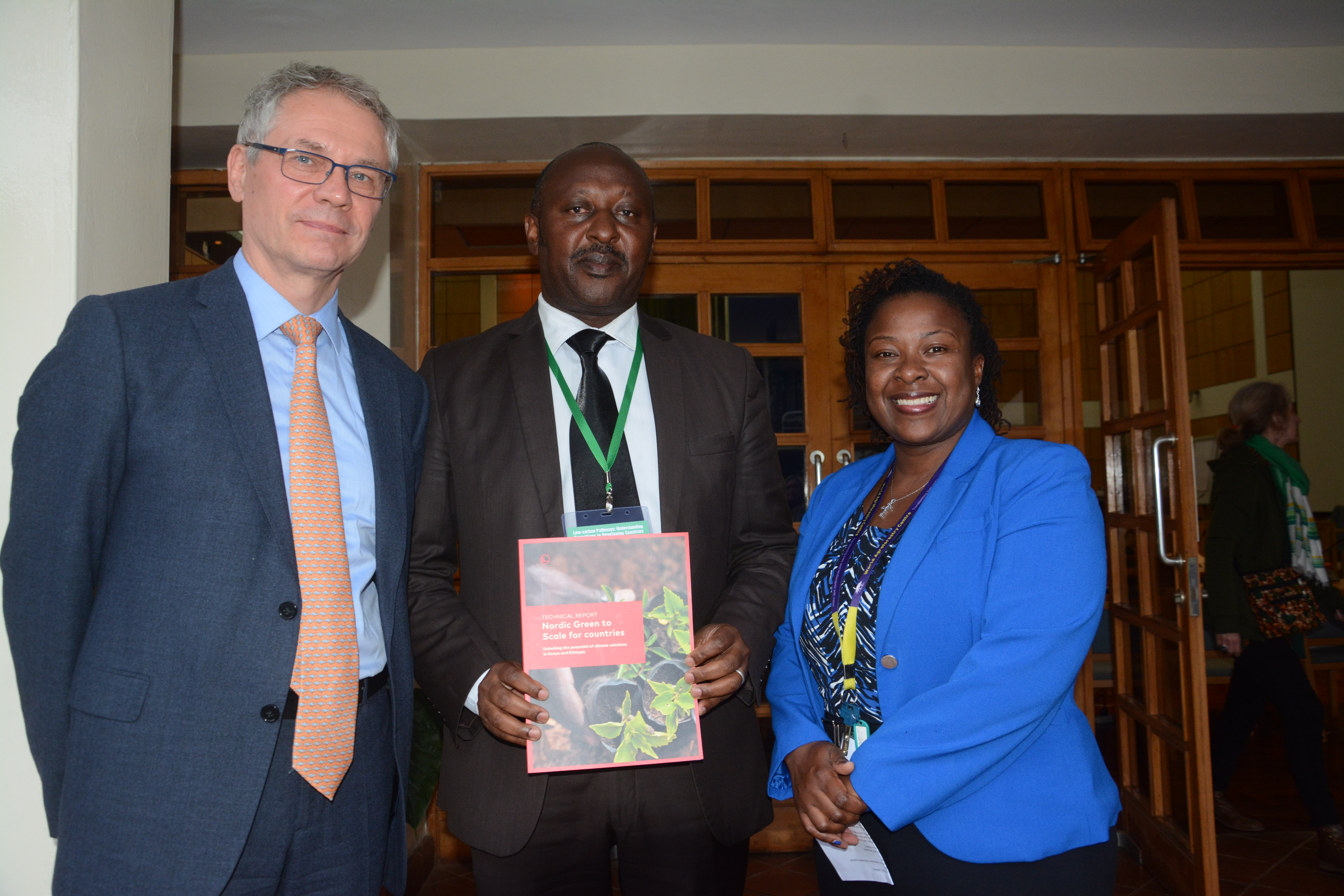By Clifford Akumu
Kenya must lead in scaling up of existing, proven and attractive climate solutions to reduce greenhouse gas emissions significantly by 23.5 million tonnes in 2030, says a new report.
Released recently by the Nordic Council of Ministers, Finnish Innovation Fund Sitra and Stockholm Environment Africa ( SEI ), the report highlights the benefits of upscaling the adoption rate or implementation of the low carbon solutions in terms of greenhouse gas abatement.
It also noted the co-benefits that the country shall derive in upscaling these solutions in terms of air quality, health, and economic gains.
Employment creation, economic well being of the nation and at the household level and gender consideration are some of the co-benefits, according to the report.
The study titled Nordic Green to Scale for Countries-Unlocking the potential of climate solutions in Kenya and Ethiopia analyzed scaling up of nine Nordic climate solutions ranging from wind power to energy efficiency in buildings and low carbon agriculture.

The study’s lead author, Mbeo Ogeya of SEI Africa Centre said scaling up of Nordic climate solutions will reduce hundreds of thousand deaths attributed mostly to air quality such as acute cardiovascular and lower respiratory illnesses.
“The need for countries to deal with climate change is inevitable and scaling up solutions such as those presented in this report in countries like Kenya and Ethiopia, potentially could contribute to reduced emissions”, said Ogeya.
“Currently, we don’t have statistics but hundreds of thousands die from lower respiratory illnesses, acute cardiovascular diseases… mostly attributed to air quality. These solutions have potential in avoidance of premature deaths.”
According to the latest World Health Organization data, about 4 million people die annually due to ambient air pollution with the majority found in Asia and Africa.
Ogeya added that although the Nordic climate solution technologies are common in the country, their adoption rate is dwarfed by the level of implementation approach.
Kenya’s potential in geothermal and solar is quite huge. However, only a scratch has been exploited.
The SITRA report, he said, provides an insight to the country’s policymakers on the benefits of upscaling the adoption rate or implementation of the low carbon solutions and contribute to the achievement of Nationally Determined Contribution (NDC).
Erik Lundberg, Finnish Ambassador to Kenya said his government fully supports initiatives to scale up low carbon solutions in the country.
“We really encourage initiatives geared towards scaling up of low carbon solutions. Reducing greenhouse gas emissions is a clear indication that the country is committed towards the Paris Agreement,” said Lundberg while launching the report during the TRANS risk Conference in Nairobi recently.
The emission reduction potential of scaling up the ten selected Nordic and other climate solutions was estimated to be 39.9 MtCO2e in Ethiopia and 23.5 MtCO2e in Kenya compared to baseline.
Scaling up various low-carbon solutions requires, according to the report, a robust re-look at barriers such as capital intensiveness, high transmission infrastructure costs and land tenure hiccups.
Low-carbon agriculture and afforestation presented the greatest opportunity for emission reduction for both Kenya and Ethiopia, notes the report.
“Low-carbon agriculture would yield 13.9 MtCO2e and 8.2 MtCO2e for Ethiopia and Kenya respectively whereas afforestation and reforestation contribute 11.2 MtCO2e for Ethiopia and 3.9 MtCO2e for Kenya,” states the report,
In the agricultural sector, lack of low-carbon technologies, awareness about these technologies and finance to support smallholder farmers to take up these technologies are barriers hindering their adoption.
Ogeya, however, points out that the report fails to give a reflection on success factors from the Nordic countries which, he says, could be an interesting element for the concerned ministries.
Availing these success factors, he noted, could enable the country to learn and know what works, what can they do to bypass the referenced Nordic countries in the report.
Chatting a low carbon energy path will require a shift in policy recommendations including the establishment of institutional structures and formulating relevant policies such as feed-in tariffs and renewable auctions to support investment in geothermal, solar and wind power.














